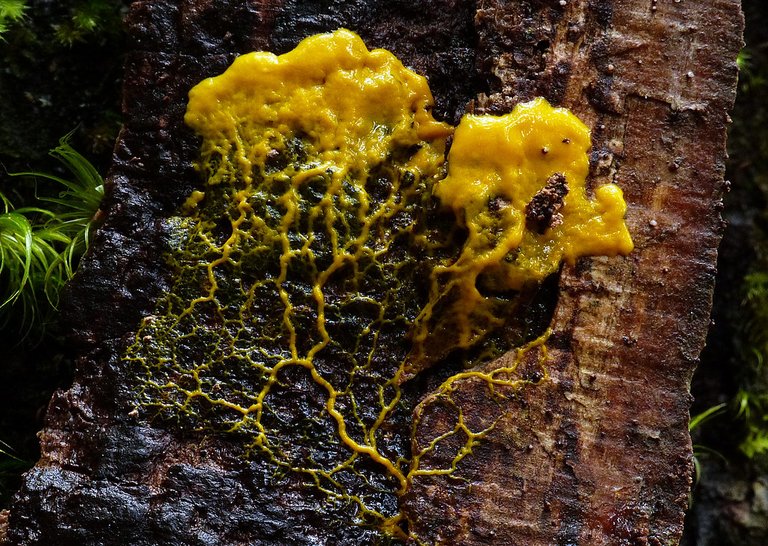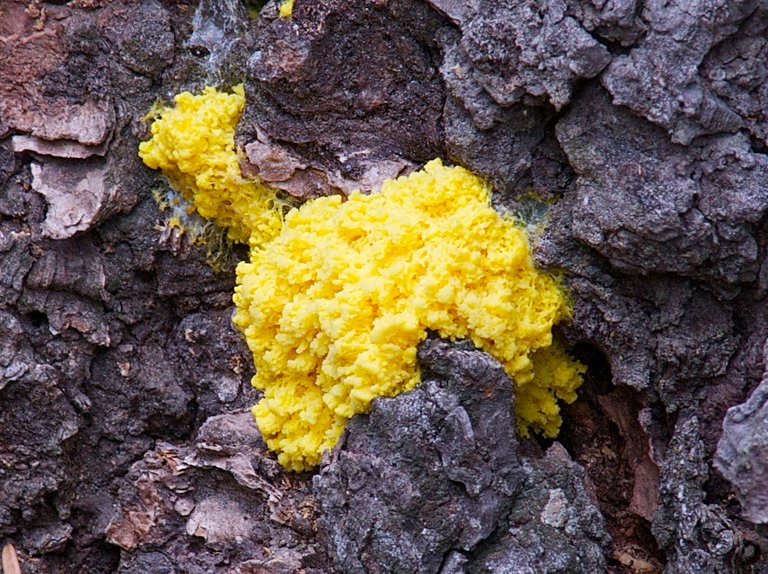The intelligent Amoeba with no brain
Did you know that slime molds aren’t animals, plants, fungi, or even molds even when it is called a mold? This organism is in a category of its own as it is an amoeba that lives in the soil. Organisms that we refer to as amoebas are single celled organisms with the ability to crawl and different amoebas are not related. One thing amoebas have in common which slime mold also have is a cell wall and a nucleus since they are single celled organisms.
With over 1000 known species of slime molds, they can be found everywhere in different colors and shapes. They live everywhere in the world but prefer damp forests where they can access rotten vegetation to live on, feed on other organisms like bacteria, yeast and fungi. So the name slime mold is an umbrella term for a group of organisms that look and act similarly but since in science we love to categorize, we will say they belong to two categories which are cellular and plasmodial.
Cellular slime molds live alone but when there is food, they send signals to other come eat causing them to come together to become 1 mass even though they still remain their single individual cells in the mass. This slime mold is always microscopic and would require a microscope for observation. Plasmodial slime mold on the other hand which are referred to as true slime molds (mycomycetes) can be seen with the naked eye.
One famous plasmodial slime mold is the yellow Physarum Polycephalum. When plasmodial slime molds come together to form a pile of mold, they form one single unit as the cells walls between them fuses together and the nuclei begins to act as one. Plasmodial slime molds have veins that are filled with protoplasm (a jelly-like substance) and are wrapped with long strands of proteins that squeezes and relaxes and this allows the protoplasm inside to move forward thereny giving them a locomotion method.
The receptors on slime molds allows them to be able to sense things and do other things like smell food nearby, respond to light, and can sense moisture. When the slime mold moves, it does this with reapect to the stimuli it recieves. Physarum Polycephalum a popular slime mold pulsates and moves at 1 centimeter per hour at room temperature and even when they move, they are able to find the faster and efficient pathway to the food on time.
To find food, slime molds first moves at different paths to as to find the best path and examine its territories but when they find one that is excellent, they begin to strengthen the pathway allowing routes that are not efficient to dry up.
This organism is also able to react to stimuli and the weather condition of area and are able to learn and protect themselves from dying by either by slowing growth or increasing it. Also, they know how to release spores like fungi, helping them grow in different regions far beyond areas where they are. So for me, these amoeba is very intelligent for an organism with no brain.
Reference
https://www.sciencedirect.com/topics/immunology-and-microbiology/cellular-slime-mold
https://www.pnas.org/doi/10.1073/pnas.1500708112
https://www.scientificamerican.com/article/how-slime-molds-remember-where-they-ate/
https://www.sciencedirect.com/topics/immunology-and-microbiology/slime-mold
https://www.nature.com/articles/nature.2012.11811
https://academic.oup.com/femsre/article/40/6/798/2400841
https://earthfireinstitute.org/the-intelligent-ingenious-utterly-amazing-slime-mold/
https://www.nature.com/articles/nature.2012.11811
https://www.pnas.org/doi/10.1073/pnas.1500708112
https://www.scientificamerican.com/article/how-slime-molds-remember-where-they-ate/
https://www.sciencedirect.com/topics/immunology-and-microbiology/slime-mold
https://www.nature.com/articles/nature.2012.11811
https://academic.oup.com/femsre/article/40/6/798/2400841
https://earthfireinstitute.org/the-intelligent-ingenious-utterly-amazing-slime-mold/
https://www.nature.com/articles/nature.2012.11811


Thanks for your contribution to the STEMsocial community. Feel free to join us on discord to get to know the rest of us!
Please consider delegating to the @stemsocial account (85% of the curation rewards are returned).
Consider setting @stemsocial as a beneficiary of this post's rewards if you would like to support the community and contribute to its mission of promoting science and education on Hive.